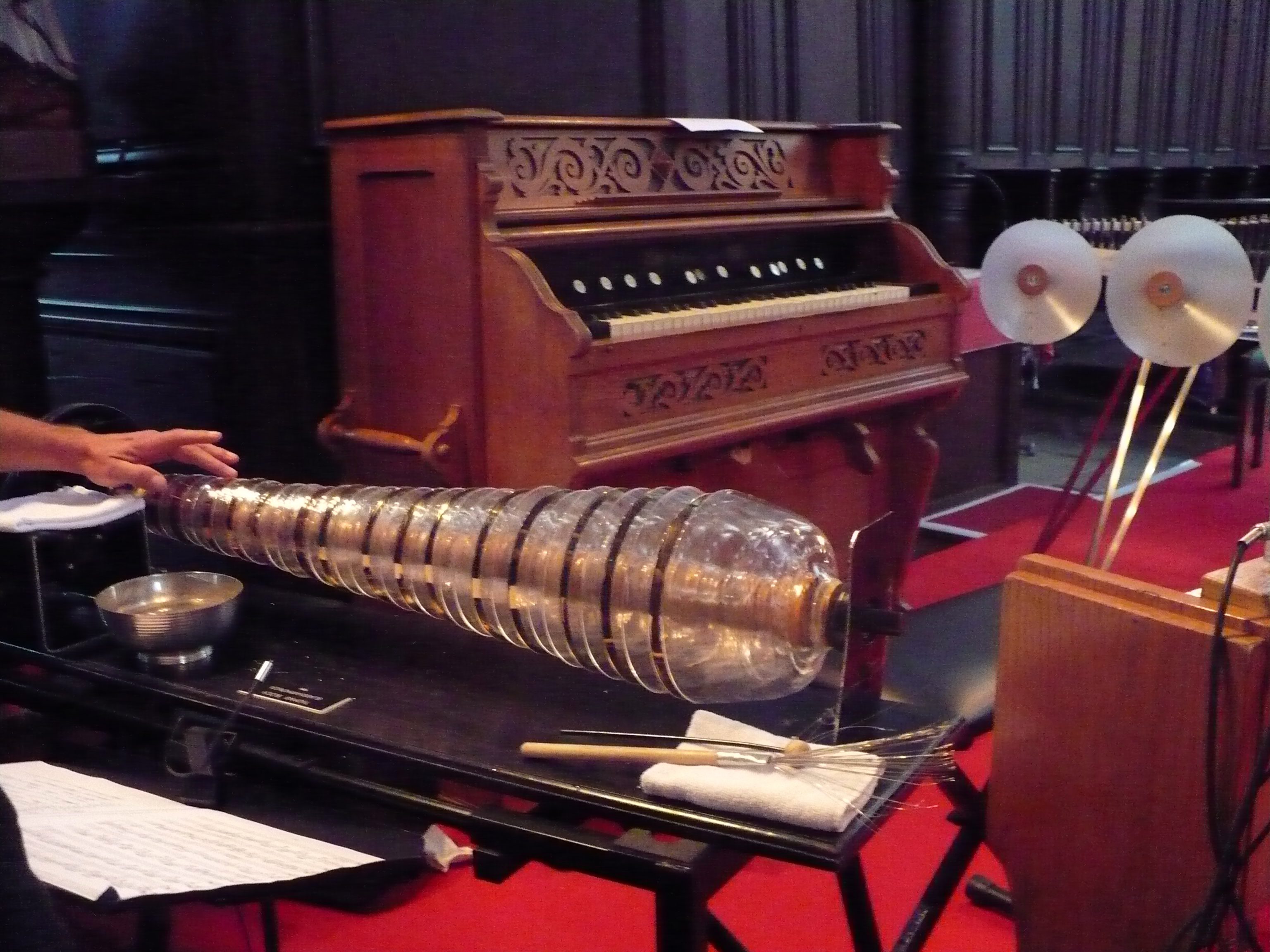Even if you don’t recognize this odd-looking contraption, chances are you will have heard the sound it makes. That’s right, this is a musical instrument, invented by none other than Benjamin Franklin, and inspired by something you’ve almost definitely tried after a couple of sherries at Christmas.
One of the seven Founding Fathers of the United States, Benjamin Franklin’s visage is still immortalized on the $100 bill, and he was renowned for his many inventions: the Franklin stove, the urinary catheter, and the lightning rod, to name a few. Franklin was also a consummate musician, so it’s perhaps unsurprising that his imagination was fired when he attended a concert in 1761 and heard an otherworldly sound that inspired him to invent one of his most beguiling creations yet. He called it the glass armonica.
Ever rubbed your finger around the rim of a wineglass to make it sing? Congratulations, you’ve mastered the hydrodaktulopsychicharmonica! Of course, this method of music-making is not limited to lulls in conversation around the dinner table.
When Franklin watched an orchestral musician playing a set of water-tuned wineglasses at that concert in 1761, he presumably thought, “I can do better than that.” He scaled things up to a total of 37 color-coded glass bowls and rigged them to a rotating mechanism that the player could operate with a foot pedal. It was easier to handle and allowed the player to produce up to 10 notes at once. And thus, the glass armonica was born.
It might look like a prop from the set of a steampunk movie, and you might ask how often composers really call for the dulcet tones of singing glass, but it’s more common than you might guess. Take Camille Saint-Saëns’ The Carnival of the Animals. In the seventh movement, the composer turned to the glass armonica to evoke a mystical, aquatic feeling.
Mozart was also a fan, and even Marie Antoinette herself is reported to have been a bit of a whizz on the old armonica. And it’s not only in classical music that Franklin’s invention found its place. The ethereal tones can be heard in music by Tom Waits, David Gilmour, and Björk, among others.
But, listener beware: there’s a dark side to the music of the glass armonica that has led some to call it “the world’s most dangerous instrument”.
In the 18th century, the glass armonica fell out of favor amid fears that it had the power to drive the listener insane. At the time, German musicologist Friedrich Rochlitz strongly advised people to avoid playing it: “The armonica excessively stimulates the nerves, plunges the player into a nagging depression and hence into a dark and melancholy mood that is apt method for slow self-annihilation.” Well, that certainly doesn’t sound good, but is there any truth to it?
It is true that one of the early proponents of glass armonica music was Franz Anton Mesmer, whose eponymous practice of mesmerism is thought of as the forerunner of modern hypnotism. Mesmer used the unearthly quality of armonica music to its full advantage as a backdrop to his mesmerism shows, which eventually attracted some high-profile criticism.
A 1784 investigation by some of the top scientific minds in France – including Franklin himself, now in exile in the country – concluded that Mesmer was a charlatan and that the music he used had only served to help him create an atmosphere that led people to believe his techniques were benefitting them when – in the eyes of the inquiry, at any rate – this was not the case.
Still, entering a state of temporary hypnosis is hardly the same thing as Rochlitz’s “slow self-annihilation”, is it? What happened to make people so very frightened of the glass armonica?
Modern musicologists believe there is an explanation for why the strains of the glass armonica can have a disorientating quality. The instrument produces sounds at frequencies between 1,000 and 4,000 Hertz, approximately. At these frequencies, the human brain struggles to be able to pinpoint where the sound is coming from. This could explain why, for some people at least, listening to this music could be a disconcerting experience.
However, it’s now been suggested that there’s a much more mundane reason why people stopped playing the glass armonica for a while. Music performance was changing, with public concerts taking place in larger venues, and there was the problem of amplification. As glass armonica artist William Zeitler explained to Atlas Obscura, you can re-engineer a piano to make it louder – that’s no so easy with an instrument made of delicate bowls of glass.
Hearing the strains of a glass armonica is unlikely to be the precursor to psychosis. But maybe it is telling that Donizetti chose this instrument when originally orchestrating the accompaniment to the “Mad Scene” in his opera Lucia di Lammermoor. The effect might be temporary, but its music still has the power to send the listener on a journey to another world.
Source Link: Tuneful Or Traumatic: Is This The Most Dangerous Musical Instrument Ever Made?
